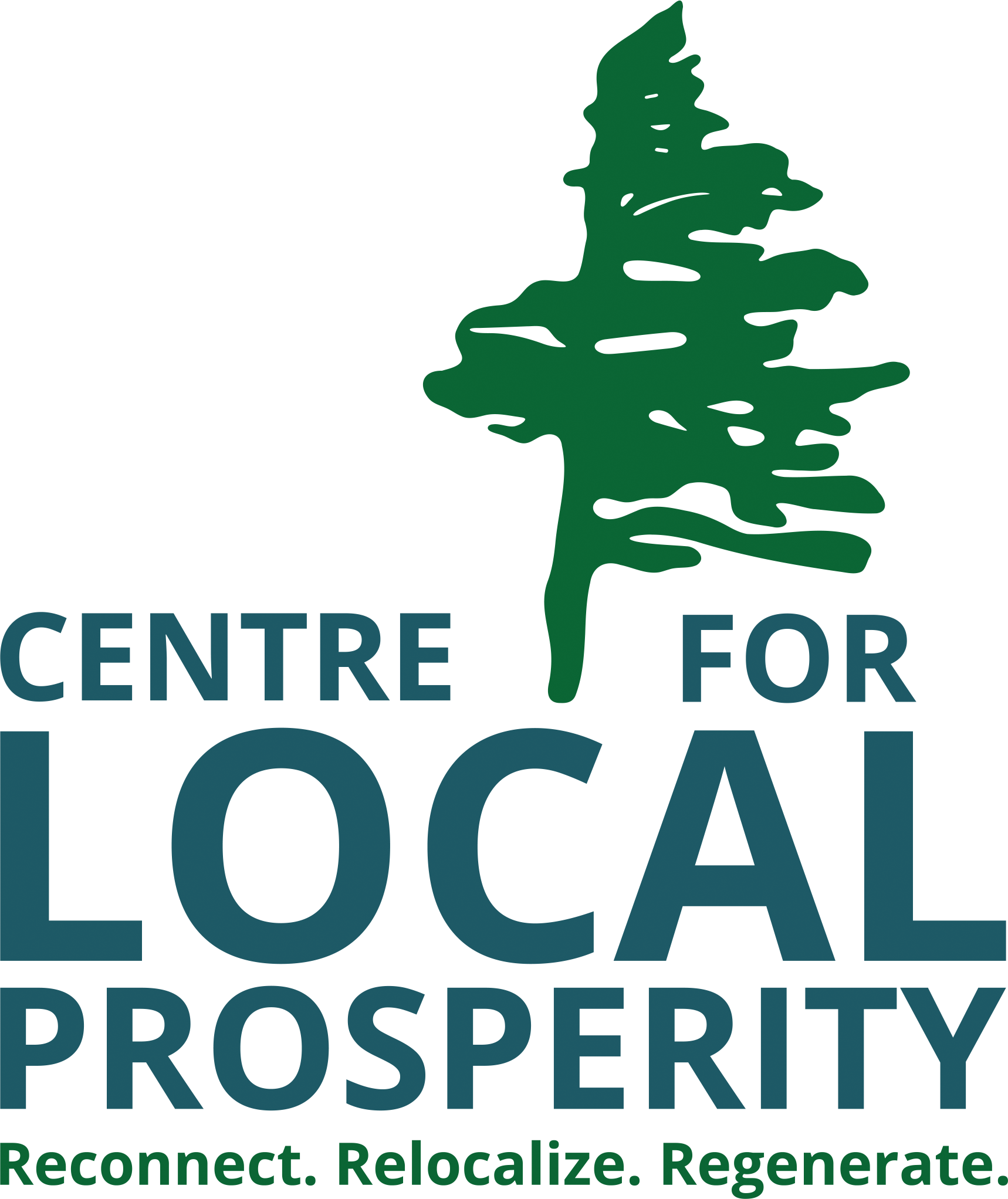Learn more about topics that are important to us at the CLP by reading about some key concepts below or looking at our learning resources, listening to our podcast, or taking a free climate change course by our partner How We Thrive.
Key Concepts (coming soon)
How do you re-localize an economy?
- Local procurement
- Import replacement
- Local multiplier effect
What is a New Economic Model?
A new model for community economy is rapidly being defined around the world. It begins with the key word – ‘localization’. It then spreads to localization of various aspects of the economy, economic infrastructure, community governance and citizen engagement.
Two cornerstone tenants of the New Economic Model are ‘locally-owned’ and ‘import replacement.’ Countless studies have shown the greater impacts of business generated by locally-owned businesses compared to those owned from afar. Import replacement strategy begins with businesses which can locally produce goods and services that are currently being imported into the area. Import replacement is a powerful way to stem the economic ‘leakage’ out of many local economies, which usually leads to export of those goods and services to other areas.
The New Economy is characterized by community supported industries that are often driven by community ‘purpose’ rather that bottom-line profit. Blossoming out of the local food movement, it is growing to include multiple kinds of local production to meet local needs. New ownership models – including consumer and producer coops, the Mondragon cooperatives of Spain, the northern Italian flexible manufacturing networks, employee stock ownership plans (ESOPs), and multiple-stakeholder ownership – turn hired labor into co-owners.
The rights to ocean harvests, good soil, fresh water, minerals and fossil fuels – our common heritage to the natural world – should be held in a commons and allocated via a social contract based on ecological principles. The rent paid for use of the commons is then shared for community benefit. Community land trusts are a bold new format gaining momentum in our region as one way to support and maintain a long-term future for the commons.
Public and community banks, place-based investment initiatives, and other forms of social investment in which lenders know their borrowers are promoting long-term sustainable development rather than short-term gain. Local complementary currencies represent a democratization of currency issue, supporting local businesses and educating consumers about how their money circulates in the local economy.
Growth in a New Economy will depend not on unfettered production and consumption of more stuff but rather on smaller-batch regional production as one way to create more jobs and foster a much broader diversity of skills. Achieving this kind of “deep” growth will necessitate both technology appropriate in scale and local skills training – often referred to as place-based education. There is a considerable, perhaps primary, role for individual household economy in this effort. Mutual support systems, the elegance of simplicity, the richness of community, living within the bounds and bounty of a bioregion, shorter work weeks – these are all elements of a new model.
Through deliberative democracy and other alternative models of participation and decision-making, governments are being encouraged to enact policies that support local production, direct investment, cooperative ownership, and land use municipal planning strategies (MPS) rooted in the principles of ecology and governed by the ‘precautionary principle.’ Some governments are responding to and supporting the wisdom and practicality of the New Economy by introducing methods for measuring well-being instead of merely measuring growth.
Engaged, caring and locally committed citizens are the point of beginning for the New Economy. A New Economy is built on affection for a particular place and for the people living and working in that place. A New Economy insists that people, land, air, water, and animals are equally respected. The sense of community and its cohesion is the greatest and most enduring source of wealth.



